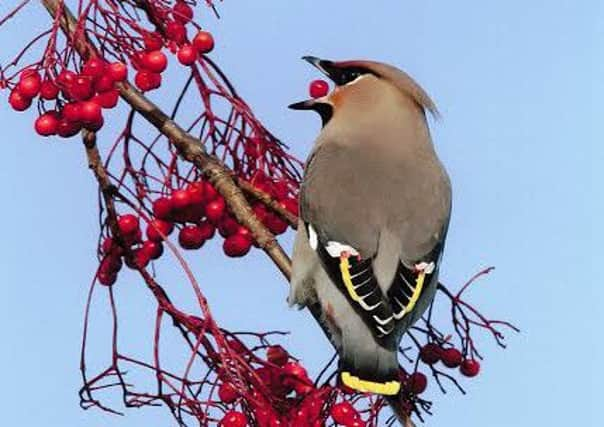COLUMN: Will it be a waxwing winter?


The number and types of bird species that arrive is also affected by the weather hundreds if not thousands of miles away. Whilst some species, particularly ducks and other water birds come here each winter to find respite from colder countries, when the weather is particularly cold on the continent numbers can swell significantly.
However, other winter arrivals are not so much dictated by the weather overseas but the availability of food. Whilst you might expect birds to travel here because of a lack of food elsewhere, one particular species tends to turn up as a result of a glut of food elsewhere! Over the past few weeks we’ve had a number of reports of small numbers of waxwings in Nottinghamshire and we’re hoping this turns out to be a ‘Waxwing Winter’. Some years as few as 100 waxwings turned up across the UK but every ten years or so we get an ‘irruption’. In part this uplift in numbers is down to a good crop of rowan berries in the birds’ Scandinavian and Central European breeding areas - but this good crop will have occurred last year. As a result the birds usually have a good breeding season.
Advertisement
Hide AdAdvertisement
Hide AdLook out for waxwings in rowan trees and other berry bearing trees such as hawthorne. Rowan is often planted in city centres to provide colour and as a result waxwings often turn up in quite urban situations such as supermarket car parks. Reports of small numbers of birds initially came in from the north of the county with reports of up to 20 birds in Nottingham over the last week - so keep your eyes peeled.


The visitors to the UK are generally Bohemian waxwings - “bohemian” reflecting their habit of continually moving in search of food. They are similar in size to starlings and are a reddish-brown colour with a very a distinctive head crest. Their wings are black, white and red with a black throat and eye mask. Their name comes from the fact that red tips on some wing feathers have the appearance of drops of red sealing wax. In flight they can be mistaken for starlings due to the similarity of their wing shape. Waxwings are very vocal birds and often emit a rapid trill of sharp notes reminiscent of a small bell.
If you are lucky to spot waxwings, we would love to hear from you; please contact [email protected].